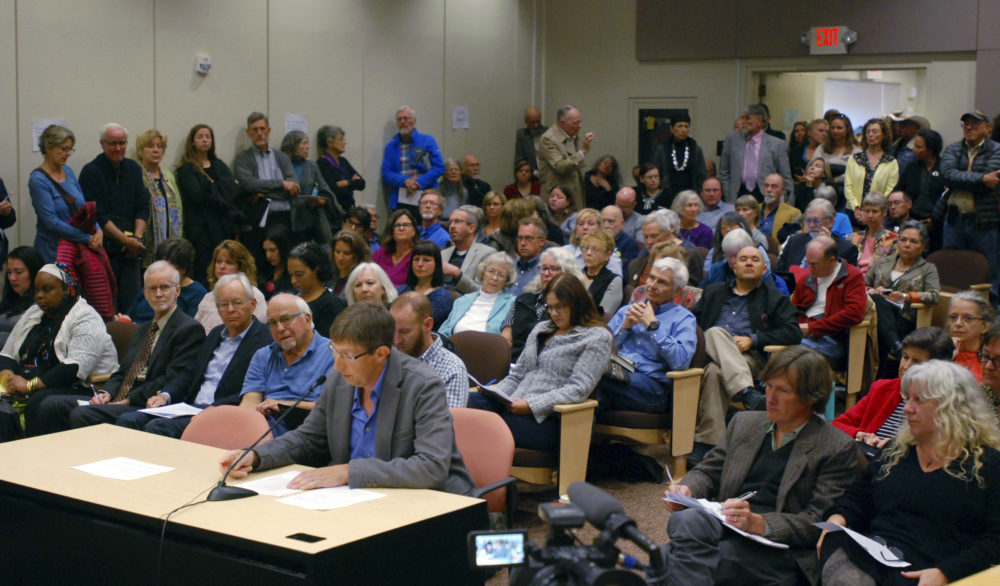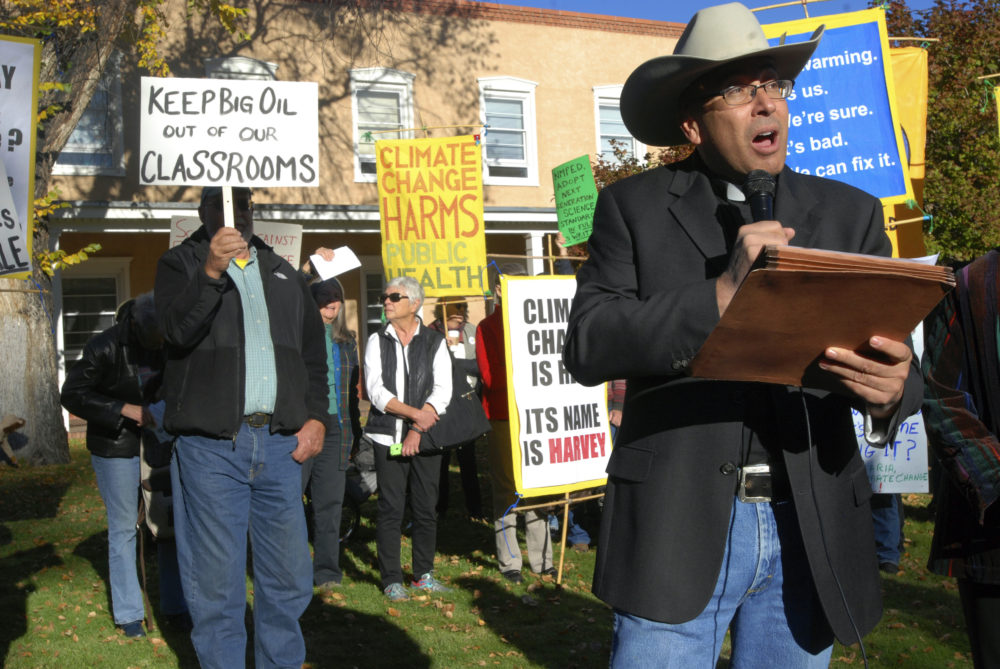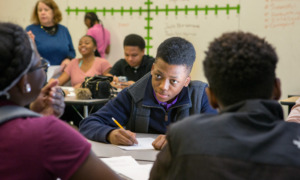SANTA FE, N.M. (AP) — New Mexico officials have been inundated with critical letters on proposed K-12 social studies standards over the inclusion of racial identity and social justice themes in a majority Latino state where Indigenous tribes have persevered through war, famine, internment camps and boarding schools aimed at stamping out their cultures.
If approved, the standards would require students starting in kindergarten to “identify some of their group identities” and “take group or individual action to help address local, regional, and/or global problems.”
By high school, students would examine “factors which resulted in unequal power relations among identity groups.”
Critics, including some Hispanics, say the standards promote victimhood, while supporters have praised the standards as “more just and anti-racist.”
The proposed New Mexico standards represent a new frontier in the clash over “critical race theory” — an academic concept increasingly used by conservative activists as a catchall term for the study of systemic racism, historical oppression or progressive social activism.
Political organizing centered around the term has been credited for swaying some voters to select a Republican governor, with mixed results other local elections across the country on Nov. 1.
New Mexico teachers already face a challenge explaining the region’s history and its evolving social structures. The state is a patchwork of 23 federally recognized Native American nations, tribes and pueblos.
Half of the state is Latino and about 10% of New Mexico’s students are Native American — with many tracing their heritage to pre-Columbian and 16th century Spanish conquistadors.
Tensions over that history erupted last year when a group of mostly white activists destroyed a historical marker memorializing Union soldiers who fought against Confederate and Indigenous armies. The stone obelisk sat on the reference point for land appropriated by Spanish settlers.
The New Mexico Public Education Department’s proposed standards are aimed at making civics, history, and geography more inclusive of the state’s diverse population so that students feel at home in the curriculum and are prepared for a minority-majority society. They add requirements for students to learn more details about Indigenous life, including more of the distinct Native cultures.

William Pockman, seated at table, a professor and chairman of the biology department at the University of New Mexico, speaks at a public hearing in Santa Fe, N.M., Monday, Oct. 16, 2017, when the New Mexico Education Department initially asked for public comment on the first revamp of its social studies curriculum in 30 years. Over 500 comments were submitted, mostly critical. Officials recently canceled a Nov. 12 in-person public forum comment session citing the pandemic, to the chagrin of Conservative activists and GOP leaders. (Morgan Lee/AP)
Some studies have found that ethnic studies programs at the high school level can increase school attendance and graduation rates. And a New Mexico lawsuit seeks to pressure the state education department to embrace teaching that students find relevant to their cultures and languages.
The education department also wants to update the history portion of the social studies curriculum, which hasn’t been changed in three decades. Proposed learning sections include the Sept. 11 attacks and the LGBT rights movement.
But many educators are concerned about the size and scope of the proposed updates.
They have said that updated school science standards in 2017 were based on an existing curriculum used in other states for years. Teachers and administrators also say they have been swamped with work returning to school amid the pandemic.
“It feels like it’s being rushed and I don’t know why,” said Kevin Summers, superintendent of the Aztec Municipal School District in northwestern New Mexico. “Can we back off? Can we just get six more months?”
State Republican officials have tried to tap into the national controversy over education. But a Republic effort last spring to to recruit school board members on a critical race platform didn’t take off.
State education officials originally planned a Nov. 12 in-person public forum for supporters and opponents to share their opinions about the proposed standards. But the venue was changed to Zoom.
That will deprive Republicans of a physical space to rally around. State GOP chairman Steve Pearce called canceling the in-person forum a “rash, political decision to kill the public comment period is as dangerous as the proposal itself.”
The education department in response said that all the public comment on proposed rule changes has been virtual since the pandemic began and extended the length of the Zoom session by several hours.
“We are in a pandemic, so crowding in an indoor setting could be dangerous,” said education department spokeswoman Judy Robinson.
Proposed 2022 curriculum change controversy
The proposed changes represent the biggest curriculum controversy the education department has faced since its effort to update new science standards in 2017, during Republican Gov. Susana Martinez’ administration.
What New Mexico children learn in school is often determined less by legislation and more by the administrative rulemaking process by education officials, which includes public comments, responses and possible incorporation of feedback.
It’s one of the strongest powers the agency has, according to the education secretary who spearheaded the 2017 science standards.
Christopher Ruszkowski, education secretary under Martinez, said public education changes don’t usually happen under legislation, but are put in place by the education department and “90% of policymaking is done at the rule level.”
Public comment led to major changes in the science standards the agency proposed, he said, which had watered down scientific facts to placate anti-science constituents after early feedback sessions.
The education department removed the real age of the Earth and human evolution, which contradict some interpretations of the Bible, and struck explicit references to climate change unpopular in southeastern New Mexico’s oil-producing regions.
Ruszkowski said he authorized the changes to a draft proposal even though he did not support them personally.
That generated a backlash from scientists in letters, newspapers ads, and a packed hall for the public comment forum.
In the end, the agency implemented the original science standards in full.
During the process of developing the science standards before they were drafted, sessions were held with members of the public to gather input. But the education department did not do that this time, instead inviting 64 people — mostly teachers and administrators — to draft the standards in private over the summer.
The draft was released on Sept. 28 and the education department wants students to learn using the new curriculum next school year.
——
Attanasio is a corps member for the Associated Press/Report for America Statehouse News Initiative. Report for America is a nonprofit national service program that places journalists in local newsrooms to report on under-covered issues. Follow Attanasio on Twitter.






























